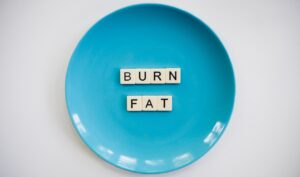The Keys To Keeping It Off

I read this years ago but still didn’t remember when I started trying to lose weight a few years ago. DIETS FAIL 80-95% of the time.
Why? Because of two primary factors. Exercise (real exercise) and Metabolism. What is the main point of a diet? TO lose weight or to lose fat? Most people treat these two as the same and they definitely are NOT. Fat is fat and yes we all would like to lose some. But weight can also include and muscle.
Let’s look at metabolism first. Metabolism is three actions. The conversion of food into energy, the building blocks of the body (protein), and the excretion of waste products. Most of us are concerned with the “turning into energy” part.
So I will use a person that usually burns 2500 calories a day. This person could be male or female, moderately over eight, or heavy. It is just an example of the “killer of diets.” This fictional person, Logan, normally burns 2500 calories a day, but most likely they are eating 26-2800 and therefore are “gaining weight.” On Holidays Logan may eat 1000-2000 more than their baseline and add some significant fat because excess calories are stored as fat.
Where Diets Go Wrong
Logan has a wedding to go to and will wear a tuxedo or tight-fitting dress. Logan may be male or female, remember? The decision is made, “I will lose 10 pounds in 30 days!” Scientiffically, or theoretical, this is very possible. A pound of fat has 3500 calories in it, 3500 x 10 is 35,000 divided by 30 days is 1166 calories a day. So Logan needs to restrit calories by approximately 1150 calories a day and all is great! !0 pounds gone.
Most likely, if Logan eats 2500 less 1150 the allowed consumption per day is 1350, Logan will lose weight. It is doable. Hard but doable.
But 1350 calories a day “in” but burning 2500 a day “out” will in almost every case result in this person’s metabolism being reduced. The body perceives that they are starving so it automatically lowers the daily calories “thermostat.” As the month goes by, the number of daily calories will drop to 2400, 2300, 2000, possibly all the way down to 1350. The brain does not want the body to die so it lowers the metabolic need from the original 2500 calories to something lower..
The Surprise About Exercise
Most people add exercise to their diet. Or, if they were exercising already, they add more. In Logan’s case, the problem with this is that mild, aerobic (steady-state) exercise such as walking, jogging, running, and light weight lifting do burn a few calories, but they also tell the body not only are we starving, but we have to do extra work.
Light exercise, in this case, only adds to the body’s attempt to lower the metabolism more, OR it drives you crazy to eat more to maintain a balance of calories in and calories out.
So exercise, if done while losing weight from a calorie deficit, should NOT be long and steady-state. Swimming, jogging, aerobics and other such low-intensity exercise become somewhat counterproductive on a calorie-restricted diet. Instead should be short sessions of moderate to very INTENSE exercise.
Intense exercise boosts metabolism. Why? Because intense exercise uses the “fight or flight” parts of the muscle and this burns stored glycogen (sugar). The subject of sugar storage and depletion will be in another post, but this is a very healthy wat to exercise.
Intense Exercise Forces the Body to Upwardly Adapt
The upwards adaption builds the strength needed to do an even more strenuous exercise the next time. Think of it in caveman days. A moderately large bear attacks our caveman. He fights for his life, a very intense “exercise.” The body will adapt to this stress by becoming stronger to be easier the next time he is attacked. Moderately intense exercise is what increases metabolism. Light exercise only does this the first few times you do it, then the body is adapted, and very, very little benefit comes from it.
But if you exercise hard, the body adapts, and you can exercise a little harder next time. It is the increase in intensity that does two things. The first is to build strength and muscle, and the second is that extra muscle (adaption) will burn more calories. I describe this in very simple terms, but it gets the point across.
What Does This All Mean?
We don’t want to lower our calories too low. Usually, 500 plus or minus will prevent metabolism from slowing. Adding a stressor, like moderate to heavy SHORT but intense exercise sessions, will allow your metabolism to remain at its old level while you lose weight.
Here is Why Weight comes Back Right After You Lose IT
Logan finished the diet, went to the wedding, and ate like a horse. After the wedding, Logan went back to what felt normal in the past, which was 2500 calories a day. BUT since the caloric needs now are only 1350 calories a day, Logan puts on 1000+ calories IN FAT every day.
This is why 80-85% of all diets fail in the end. Most of us have experienced this, so we know it is true. You gain back all the weight PLUS more until your metabolism returns to normal of 2500 a day. There is some strong research that shows it does NOT go back but stays at a lower level, thus making the next diet even hard.
YOYO dieting is very unhealthy.
The Summary

Only calorie restrict a moderate amount and add some short, intense exercise such as what we do at LeoFitLabs. You can do 20 minutes twice a week and you should be able to maintain your metabolism, get stronger and lose weight- FAT.



